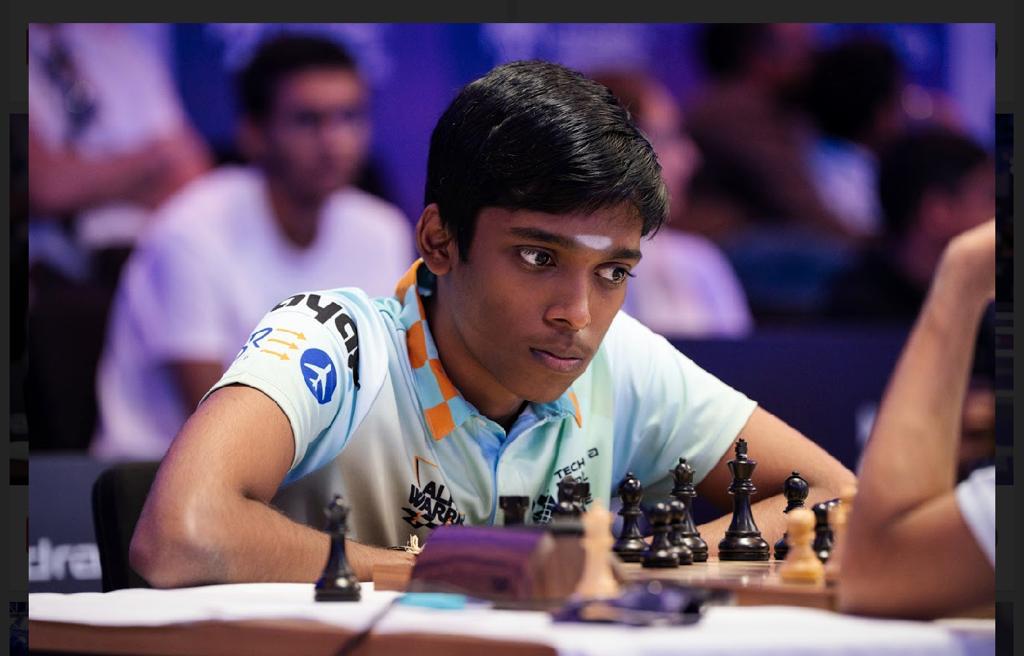
Not all winners have to ooze aggression. Not all have to intimidate the opponent with body language. Some are the quiet types, likely to go unnoticed in a crowd unless they try to draw attention. They don’t glare at the rival or try psychological tricks to gain an advantage. These type of players let their silent actions make the noise. Sometimes, the noise becomes loud.
R Praggnanandhaa’s historic march into the Chess World Cup final, thereby ensuring a berth in the Candidates tournament, has been the tale of one such player. He is the first Indian after Viswanathan Anand to qualify for the Candidates, the winner of which gets to challenge the world champion. Ask the 18-year-old about his game, preparation or opponents, and a few syllables are all that you are likely to get in response. He is not the talkative type. He believes in expressing himself on those 64 squares. On the board, his moves make all the noise. Sometimes, that drowns out everything else.
That’s what makes ‘Prag’ special. He has the ability to beat top players consistently. Among his victims in the World Cup in Baku, Azerbaijan’s capital, have been Hikaru Nakamura, the world No. 2, and Fabiano Caruana, the World No. 3. He has already got the better of Magnus Carlsen in online games of shorter durations. A face to face with the World No. 1 in the World Cup final is a well-deserved outing for the World No. 29, who is still eligible for junior events.
“Carlsen himself had said that India is going to become the hub of world chess,” Dibyendu Barua told RevSportz. “This generation of players including D Gukesh, Praggnanandhaa and Arjun Erigaisi are making that happen. Reaching the World Cup final is by far the biggest achievement by an Indian after the deeds of Anand, who has played a role in this transformation.”
India’s second Grandmaster after Anand, Barua belongs to that generation of players who first made a mark at the international level. While Anand zoomed ahead, others could not catch up. This continued in the next generation of players like K Sasikiran, P Harikrishna, Surya Sekhar Ganguly and others. Some of them shone at the international level for a while. None made a lasting impact.
Praggnanandhaa, Gukesh and their generation is changing this narrative. The India 2 team won bronze at last year’s Chess Olympiad, in addition to a number of individual medals. These youngsters were part of that contingent. What we have seen at the World Cup, where four Indians reached the quarter-finals, is an extension of that concerted good work and organised effort.
Elaborating on Anand’s role, Barua noted that the five-time former world champion spends a lot of time with the younger players these days. “They go and train at Anand’s academy, get tips from him and see firsthand how the mind of a top player functions,” he said. “These players are reaping the benefits of interacting with Anand. There was a gap which has now been bridged. Of course, you have to laud Pragganandhaa’s talent and tenacity.”
Raunak Sadhwani is 17, and a player of this generation. The fourth-youngest Indian to become a Grandmaster at 14, he feels Praggnanandhaa has a few traits many do not. “His intuition is strong,” said Sadhwani. “He senses the correct moments and comes up with the appropriate moves. He is quick in calculating and good at positional play.”
A member of the India 2 team at the Chess Olympiad with Praggnanandhaa and Gukesh, Sadhwani said that so many teenagers or players just out of their teens doing well at the top level and showing consistency showed the depth of Indian chess. “Earlier, we had four or five good players and the rest were average,” he said. “Now, the number of strong players has multiplied. This has led to a healthy competition. Many players are striving to get better.”
Not just better, this bunch is trying to be the best. Gukesh, the first Indian to overtake Anand in the Fide ratings, Praggnanandhaa becoming the first Indian to reach the World Cup final, and the improved show at the Olympiad are examples. It may not be very long before more Indians get inside the top 10 and top 20. The bar has been raised. These players play to win, not just to compete and fight hard. With no fist pumping, but just a simple smile after the game.
Also Read: EXCLUSIVE || “Indian Chess Really Happened Because of Anand Sir” – Praggnanandhaa



